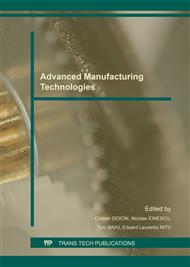p.120
p.126
p.132
p.141
p.147
p.153
p.161
p.167
p.173
Ultrasound Methods for Evaluation the Quality of Welded Plastics
Abstract:
The article presents the way that could be evaluated feasible nondestructively with ultrasounds the plastics pipe type materials. The necessity of this study was discussed considering multiple uses of plastics’ welded joints especially in demanding fields such as natural gas transportation arteries. The main objectives were: developing a theoretical reference model of ultrasonic wave propagation through material, i.e. changing the acoustic parameters, determining reflections’ amplitudes on grid interface and bottom samples and experimentally verify the feasibility of the theoretical model developed. The methodology used consisted in studying the propagation of ultrasound waves of different frequencies and amplifications, in normal incidence, to the surface of 12 samples welded plastic pipe type, using pulse-echo technique with the functioning transducer in mode transceiver. With the obtained results we aimed to identify the sample with the highest quality of the welded joint (complete fusion) by drawing the amplitudes variation in the weld area and its bottom. For the best quality sample it was studied the amplitudes variation reflected on the same areas, on the entire circumference of the pipe (from 10 to 10 degrees) in order to establish the limits where the acoustic response in amplitude can evolve in reality for the piece without defect.
Info:
Periodical:
Pages:
147-152
Citation:
Online since:
April 2016
Keywords:
Price:
Сopyright:
© 2016 Trans Tech Publications Ltd. All Rights Reserved
Share:
Citation:


